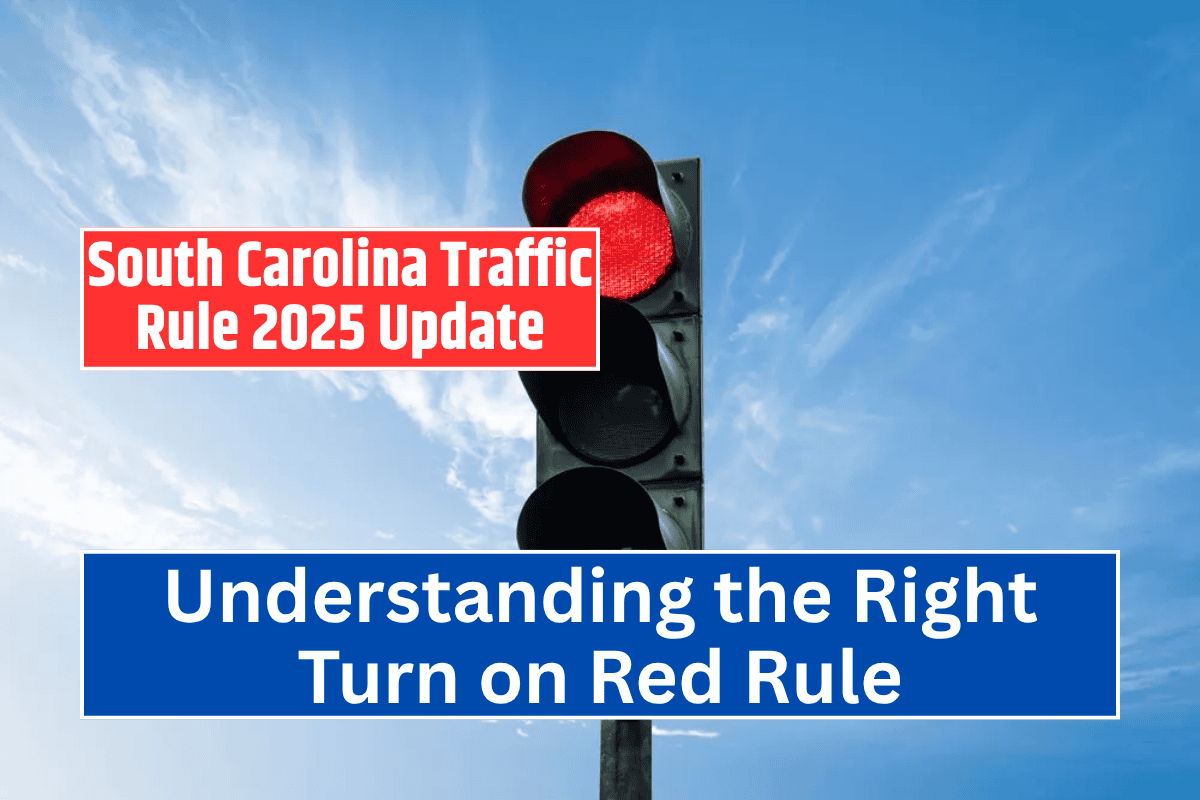Making a right turn on red is a common maneuver at intersections—but not everyone knows when it’s actually legal or safe to do so. In South Carolina, intersection-related accidents often involve drivers attempting to turn right at a red light without following proper rules.
This guide breaks down the 2025 right turn on red laws in South Carolina in simple terms, helping you avoid accidents, fines, and legal problems.
Can You Turn Right on Red in South Carolina?
Yes, South Carolina law allows right turns at red lights, but only if certain conditions are met. You must first stop completely, and then follow specific safety steps before turning.
According to South Carolina traffic law:
You can turn right on red unless there is a sign that says “No Turn on Red.”
You must come to a complete stop before the stop line, crosswalk, or intersection.
You must yield to all pedestrians who are crossing or waiting to cross.
You must yield to other vehicles that have the right-of-way in the intersection.
If you skip any of these steps, your right turn becomes illegal and potentially dangerous.
Why Right Turns on Red Can Be Risky
While legal in many cases, right turns on red can still lead to accidents—especially when drivers don’t check for pedestrians, cyclists, or other cars.
Here are common dangers of turning right on red:
Pedestrian Accidents – People legally crossing the road may be hit by drivers who turn too quickly or without looking properly.
Bike Crashes – Cyclists traveling near intersections are often hard to see and can be struck during careless turns.
Sideswipe Collisions – Other drivers already in the intersection might get sideswiped if someone makes a rushed or wide right turn.
Blocked Crosswalks – Vehicles waiting to turn may stop in the middle of a crosswalk, creating obstacles for people walking, especially those with mobility issues.
Driver Confusion – When drivers make unclear or illegal right turns, they create hesitation or chaos, which can trigger other accidents.
Even if a right turn on red is allowed, it must be done with full attention and patience.
How to Safely Make a Right Turn on Red in SC
To stay safe and legal, follow these steps every time:
Stop fully before the crosswalk or white stop line.
Look left and right for oncoming traffic.
Check for pedestrians and cyclists, especially on your right side and behind you.
Make sure there’s no “No Turn on Red” sign.
Only turn when the road is clear, and do not rush the turn.
If it’s not fully safe, wait for the green light. Safety should always come before convenience.
Legal Consequences of Unsafe Right-on-Red Turns
If you make an unsafe or illegal right turn on red in South Carolina, you could face:
Fines and points on your driver’s license
Increased insurance premiums
Legal liability if you cause an accident
If your turn results in a crash, especially one involving a pedestrian or cyclist, you may also be held personally responsible for injuries and damages.
A ticket for failing to yield or for making an illegal turn may cost you around $100 or more, plus court fees, and could add points to your driving record.
Injured by an Unsafe Right Turn? Know Your Legal Rights
If you or someone you love has been hurt because a driver made an improper right turn at a red light, you may be entitled to compensation for your injuries. A qualified South Carolina car accident attorney can help you:
Gather dashcam or traffic footage
Speak to witnesses
File a claim with the driver’s insurance company
Negotiate a fair settlement
Take your case to court if needed
Don’t delay—getting legal help quickly increases your chances of winning your case and recovering medical costs, lost wages, and pain and suffering.
In South Carolina, making a right turn on red is legal—but only if you stop, check for others, and proceed cautiously. Failing to follow the rules puts others at risk and can lead to serious consequences. If you’re unsure at an intersection, the best rule is: When in doubt, wait it out.
Understanding and respecting traffic rules like these keeps everyone safer and helps reduce the number of accidents on South Carolina’s roads.












